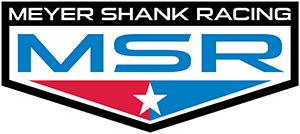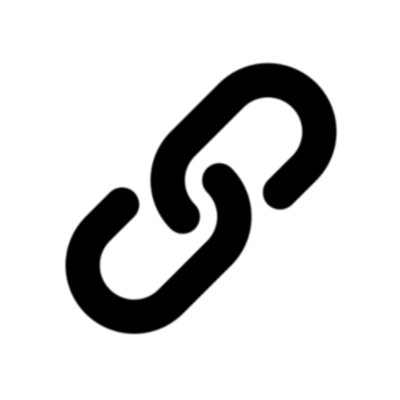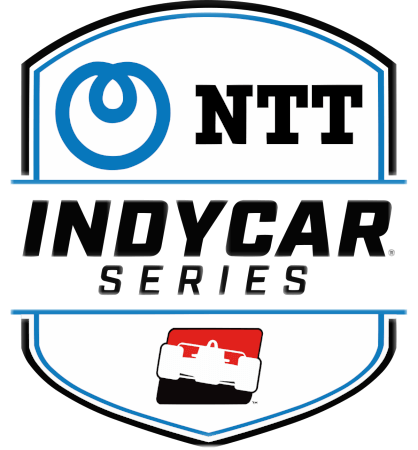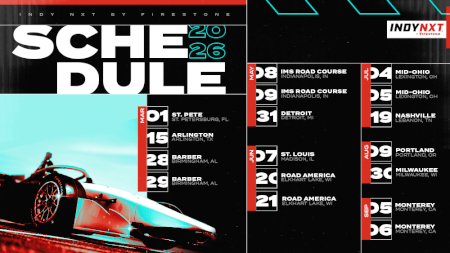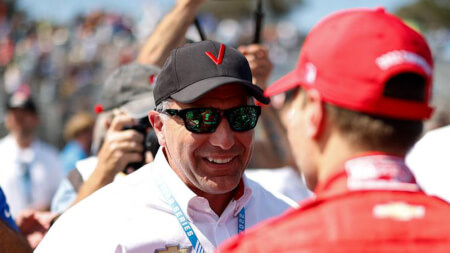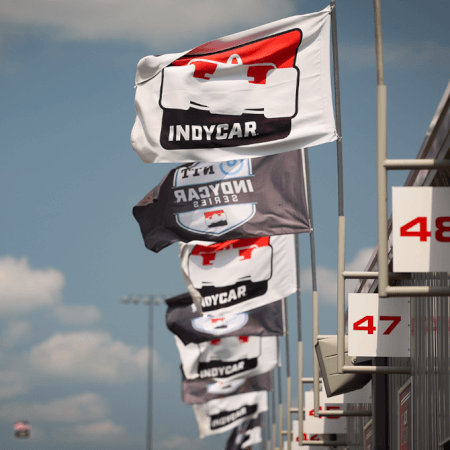May 30th 2025
Meyer Shank adds quality control and rules compliance officer
The recent spate of infractions found during the IndyCar Series’ pre-qualifying and post-race technical inspection process has led the Meyer Shank Racing team to react with an internal staffing change.
Done in response to the zero-tolerance approach that has emerged since Pole Day at the Indianapolis 500, MSR has appointed veteran IndyCar manager George Klotz, who serves as race strategist for Marcus Armstrong’s No. 66 Honda, as the team’s first race car quality control and rules compliance officer.
The addition of duties for the widely respected Klotz comes after two of Team Penske’s cars were failed by IndyCar’s tech inspection team for illegally modified attenuators, which IndyCar President Doug Boles went into great detail to explain while announcing the back-of-the-grid penalties and fines for the Nos. 2 and 12 Chevys prior to the Indy 500.
To date, IndyCar has not explained the specifics of what its inspectors found with the Nos. 27 and 28 Andretti Global Hondas after the Indy 500, other than to cite the rules that were violated and suggest aerodynamic advantages could have been gained. The infraction for the No. 90 PREMA Racing Chevy was also listed in the penalties on Monday, which the team voluntarily explained to RACER. Andretti declined the opportunity on Tuesday and did not respond to a follow-up call on Thursday.
With the two Penske cars demoted to the rear of the field before the Indy 500 and the three cars from Andretti and PREMA moved to the bottom of the field in the final results, MSR co-owner Mike Shank says it’s necessary to match the energy coming out of tech inspection with the team’s first vehicle QC and compliance boss.
With the two Penske cars demoted to the rear of the field before the Indy 500 and the three cars from Andretti and PREMA moved to the bottom of the field in the final results, MSR co-owner Mike Shank says it’s necessary to match the energy coming out of tech inspection with the team’s first vehicle QC and compliance boss.
“We’re assigning a person to be on top of our what I'm going to call ‘QC and rules compliance,’ where they are all about rules and compliance, right?” Shank told RACER. “We now have George Klotz doing them, starting this week because we feel that they're really going to take a hard line on lots of things. And we're going to be ready for it as best we can.”
Most IndyCar teams handle vehicular QC in a collective manner with each mechanic tasked with preparing their area of the car to pass inspection. It involves ensuring all of the correct and legal parts are on their cars at each event, the car builds are done in the manner that meets the rules, and all of the cars’ measurement from minimum heights to maximum widths, are done to regulation before the car crosses IndyCar’s technical inspection pad.
The all-team approach isn’t changing, according to Shank, but there is a new layer of oversight and ownership of the process for Klotz that could become a standard practice for other teams to follow.
“We already did a mini version of that before the 500 and I'm assuming almost all teams did,” he said. “Yeah, we saw the hammer get dropped. We saw what it can do and what the effect can be. We didn’t want a part of that, and so we started talking about it and we’re doing something even more than we already were to keep away from the hammer.”
For more information: www.racer.com
For more Industry News, please Click Here
For more information: www.racer.com
For more Industry News, please Click Here
